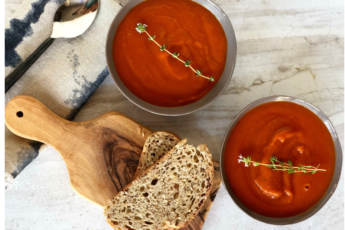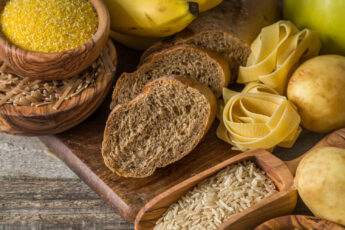Letting kids loose on Halloween doesn’t have to mean all hell breaks loose afterwards.
Halloween is a once-a-year occasion. I’m focused on what kids do the other 364 days of the year. If they’re eating well on those other days, then there’s absolutely nothing wrong with letting them enjoy Halloween!
Every year around this time I get a ton of questions from parents about what to “allow” kids to eat on Halloween, how much candy to let them collect and keep, and what kind of candy is “best” to give out on Halloween.
 Sugar Shakedown
Sugar Shakedown
No, sugar won’t make them hyperactive. They might have a burst of energy, but the whole “sugar-gives-them-a-buzz” thing has been completely dismissed. The rigorous science just doesn’t show anything. Actually, a high-sugar snack has even been shown to help keep you on-task. I’m NOT encouraging more sugar. It’s not angel food, but not devil’s food, and it’s not a new food, either. Just keep it real.
Your Homework: Laying the Groundwork
Planning ahead is everything here. Kids (and adults) don’t like sudden, unexpected changes, especially to their eating habits. Here are a few tips to help things go smoothly on the big day:
- Be real about how much you buy. You know how many kids typically visit you, so get enough for THEM. Buy with an eye to having as few leftovers as possible.
- If you’ve already bought the candy, let the kids know ahead of time about the plan for leftovers: share with neighbors, you’re bringing them into work for co-workers, making up a bag for a child who couldn’t Trick-or-Treat (a nice thing to do for a child who is ill), and so on.
- Buy only the smallest portions of candy! No full-sized bars, just the little mini things. That way even with leftover stuff, the treat is reduced to a bite, not a commitment.
 Tricks Before Treats
Tricks Before Treats
The idea to reinforce to kids is to “take care of business” first, by spending calories on the foods we need. If there’s anything left, have a treat and enjoy it. That’s the eating style I want kids to have 364 days a year.
- Keep only the “top 10%” – their absolute fave candies. The rest gets donated or shared with others. Quickly – like, get it out of the house the next day. (Note: For me, candy corn got tossed first thing! Never could stand the stuff, even as a kid!)
- Make it social! Halloween is also about dressing up, hanging with friends, and walking the neighborhood. This applies to all holidays or occasions. It helps them see food and eating in perspective.
- Never make candy a “reward” for good behavior (save that for training the dog), but see it as a teachable moment. Candy is an “extra”, it provides mostly empty “discretionary calories” so treat it that way. It’s something to have in a small amount AFTER the rest of needs are met.
“What Does the Research Say”?
Yes, someone actually did a study on whether seeing Michelle Obama’s face (versus other political women’s faces) might influence them to choose a box of raisins or a small name-brand candy bar. Connecticut home. Three years of Halloween. Kids were directed randomly to either of two sides of the porch – one with Michelle Obama’s pic, the other side pics of other political women (Hillary, Ann Romney, or no photo) and asked if they wanted a box of raisins or a small candy bar. Authors described the community as politically liberal.
Result: The kids on the Obama side were 19% more likely to choose the box of raisins than the candy.
Great, but there was no info on whether the kids then ATE the fruit. After all, no food can be nutritious until you EAT it. Ironically, the box of raisins is about the same calories as the small candy.
Cut-To-The-Chase-Nutrition Take-Away
Halloween can be a blast. It should be. It’s also over in a day so enjoy it fully. On other days, it’s about getting what you need first: the fruits, veggies, whole grains and dairy foods FIRST. Be active, FIRST. Those are the tricks, before the treats.





